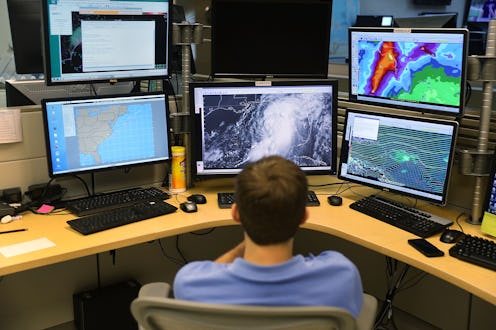News
Winter Storm Riley Could Be Super Dangerous If You Live In These Areas

This week, a powerful winter storm is sweeping through the northeastern United States, and it's already caused multiple fatalities. As such, it's important that you're aware of where Winter Storm Riley has hit, where it is now, and just how far its destructive power is being felt.
The storm, popularly called a "nor'easter" thanks to being localized in the northeastern United States, is no laughing matter. It's reportedly already undergone bombogenesis, the dramatically named process which gives rise to so-called "bomb cyclones." Authorities throughout New England are imploring residents to take the threat of the storm seriously, with the National Weather Service in the city of Boston declaring Riley a "life and death situation for those living along the coast."
In other words, as the Boston NWS strenuously stated on Friday, if you're living along the New England coast this is a weather event to take very seriously. Winter Storm Riley has already caused flooding up and down the northeastern seaboard, as well as further inland. According to The Weather Channel, roaring winds have caused significant property damage from the mid-Atlantic seaboard clear up to the northeastern seaboard, and many people living along the Massachusetts coast have been urged to evacuate.
The upshot is that Riley has already pummeled multiple states in the northeast, including Connecticut, Rhode Island, New York, Maryland, New Jersey, Virginia, and North Carolina, causing a reported six deaths at the time of this writing. It's also had an effect on residents of states further from the coast, knocking out power to hundreds of thousands of people, and reportedly downing trees as far inland as Michigan, Ohio, and Pennsylvania.
All in all, the storm is reportedly stretching from the northeastern New England coast all the way down to North Carolina. The National Weather Service pegged the storm's wind speeds at between 60 and 80 miles per hour on Friday, which are significant figures. By way of comparison, according to the Saffir-Simpson hurricane wind scale, a Category 1 hurricane possesses wind speeds between 74 miles per hour and 95 miles per hour.
It's also reportedly had a disruptive effect on travel throughout the region, forcing the cancellations of thousands of flights, and causing some considerable grief to travelers in the air. In fact, one flight bound for Dulles International Airport in Washington, D.C. was struck with such turbulence from Winter Storm Riley that almost everyone on the plane reportedly threw up. Thankfully, the pilots themselves didn't vomit, although they were supposedly "on the verge" of doing so.
Winter Storm Riley is expected to continue battering the northeast this weekend, so anybody living in the affected regions may have to take precautions for a while. These sorts of storms aren't all that unusual for the region, to be clear, as made clear by the fact that they have a unique name, "nor'easters."
The season for these sorts of storms typically stretches from September to April every year, although as The Weather Channel notes, they can theoretically happen at any point on the calendar. In recent years, storm conditions have been rough for the region, with several major and destructive weather events hitting the northeast. In fact, just months ago, a nor'easter called Winter Storm Ethan descended on Christmas, blanketing the northeast in snow and bringing lightning and high winds.
In short, if you're living in or around the northeastern states affected by Winter Storm Riley, by all means please prioritize your personal safety above all else. There are already multiple fatalities associated with the storm, after all, and however much you might value your property or your possessions, you only get one life.